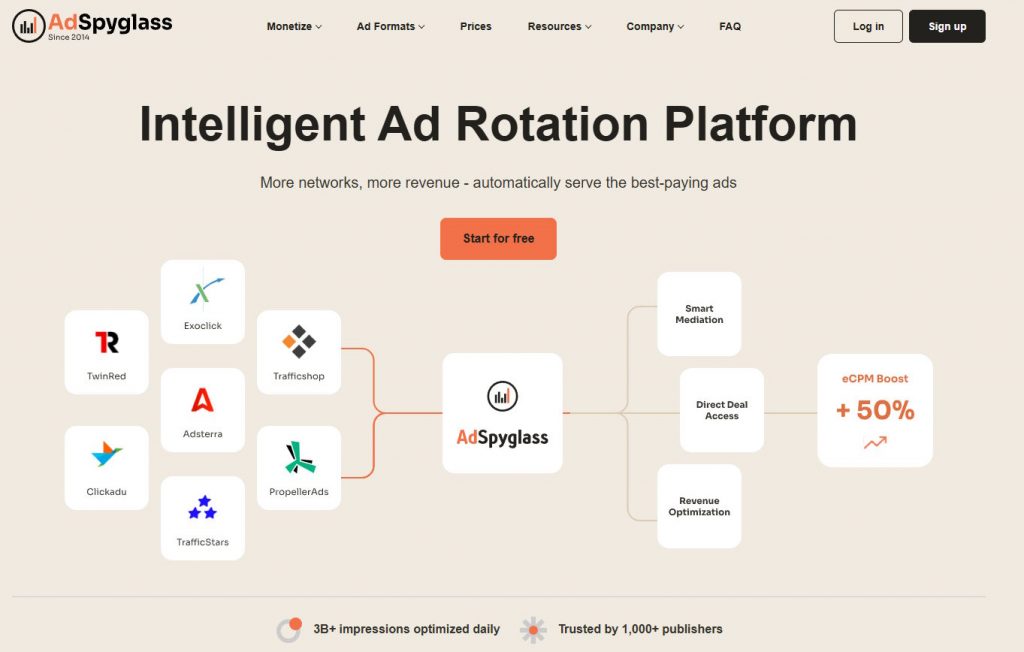Cost per registration (also known as CPR, pay per registration, PPR) is a pricing model in digital advertising where advertisers pay only when the user registered. The term is also used as a metric that defines how much money marketers invest in order to attract a single registration.
Cost per registration is mostly used by subscription-based businesses. It includes streaming services, online schools, apps, events, etc.
In terms of a pricing model, CPR is a good choice. Advertisers have a low financial risk since they will definitely get something out of their investment. However, it might be difficult to find advertisers who are ready to accept this pricing model.
In terms of metrics, it is a great way to measure the success of your ad campaigns. If the investment in the advertising is high but there are too few registrations, you have to consider:
- your target audience: are you targeting the right people?
- your advertising channels: is your audience using this channel at all?
- your creatives: do they clearly state the value of subscription and have a call to action?
It is impossible to say what is the perfect cost per registration since they differ across industries, locations, demographics, etc.
Activation
Activation is a specific campaign, event, or interaction that is aimed at strengthening the brand’s image. The overall goal is to help build awareness and trust with the target audience – potential clients, buyers, and employees.
Depending on the purpose, there are two types of marketing activation that can be used as a part of a marketing strategy:
- Brand engagement. That is a strategy dedicated to building an emotional connection between a customer and a company.
- Marketing activation. This strategy focuses on generating sales immediately after the event.
Activation is a second stage in the model of the marketing funnel that is called AARRR (Acquisition, Activation, Retention, Referral, Revenue). In this scheme it is the first time users start to benefit from the advertised product. This activation event has several key features:
- It happens only once – people cannot be activated again. Therefore, this stage must be thoroughly planned, as there is no way back.
- It demonstrates the real value that users perceive while acquainting with a product or service.
- It has a beginning and an end, which are determined in advance.
Any additional improvements made at the activation level will have a positive impact on the subsequent stages of the marketing funnel. To be more specific, increasing the activation rate from 8% to 10% will result in a 25% increase in revenue with no change in the advertising budget.
Ad Stream
Ad stream is a flow of commercials or advertisements that are demonstrated to the user during a certain period on a website. The ad stream usually consists of a chain of videos that can either advertise one company or refer to various brands.
Ad stream video is an advertising format that is placed on the publisher’s website or mobile application. There are two types of ad stream format, depending on the placement and advertising material:
- In-stream. In this case, videos are built into the video player and are broadcasted before or after viewing the main content. Some in-stream ads can be skipped after the first 5 seconds of a video. However, there is also a type of advertising video that lasts up to 15 seconds and can not be skipped by a user. Such in-stream commercials appear on YouTube, as well as on Google partner video apps.
- Out-stream. Out-stream video is placed outside the video player (on the page of the site or inside the content of the mobile application). On the one hand, out-stream videos show great effectiveness if the main purpose of the advertising campaign is to increase the awareness of a brand. On the other hand, they get lower KPI in comparison to the in-stream ads.
Cost per Mille
Cost per action (also known as cost per thousand, cost per millenium, pay per mille, CPM, PPM, cost per impression, pay per impression, CPI, PPI) is the cost per thousand impressions of a banner, ad, or any other commercial unit. It is an indicator of the price the advertiser pays for 1000 impressions left on a website. CPM indicator is usually used in advertising collaboration, when the advertiser pays for showing ads, regardless of whether someone clicks on it or not.
CPM is a model that has several specific features, which are the following:
- Each ad impression, whether it be followed or ignored, is recorded.
- Advertisement clicks are free.
- The ads are demonstrated to the target audience, segmented by various criteria.
- The rate of money spending depends on the activity of the audience on the website.
- The more activity, the faster the ad gains new impressions and therefore absorbs the budget.
CPM metric is most often referred to when it is necessary to convey information to a wide audience:
- distribution of information about the current sales, promotions, discounts, etc.;
- image and reputation building;
- increasing the popularity and brand awareness;
- enhancing interest in the events;
- promotion of a new product.
Even though a CPM indicator is a popular model for analyzing the effectiveness of an advertising campaign, there are several situations where the employment of CPM is not relevant. Indeed, it will not be useful when advertising small, niche brands with a limited audience. Apart from that, there is no point in using CPM by itself. The most effective strategy is to combine different metrics (CPM, CPC, CPA) in order to get accurate results.
